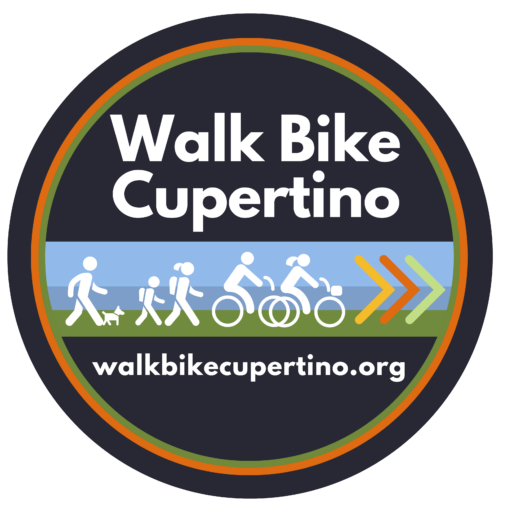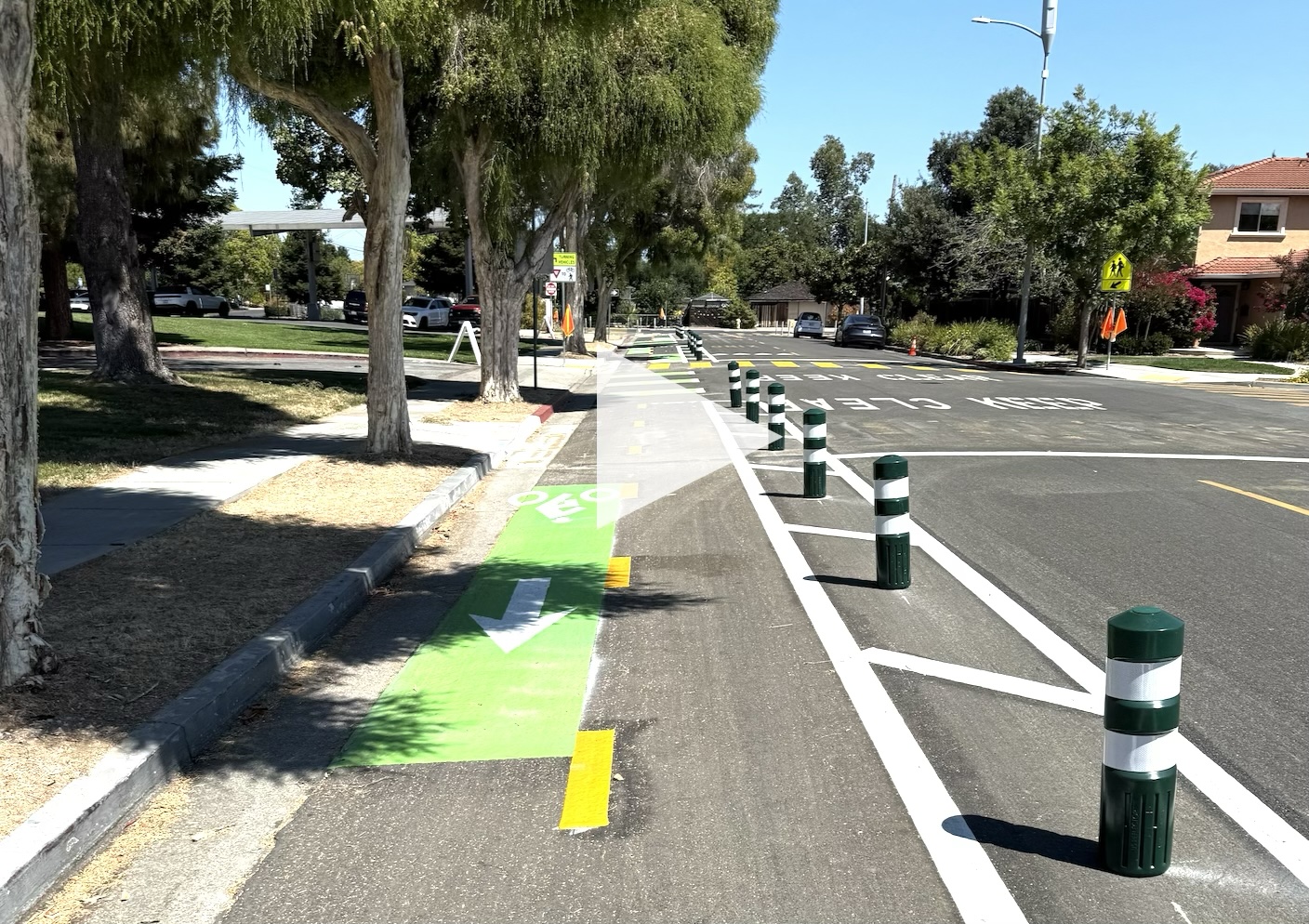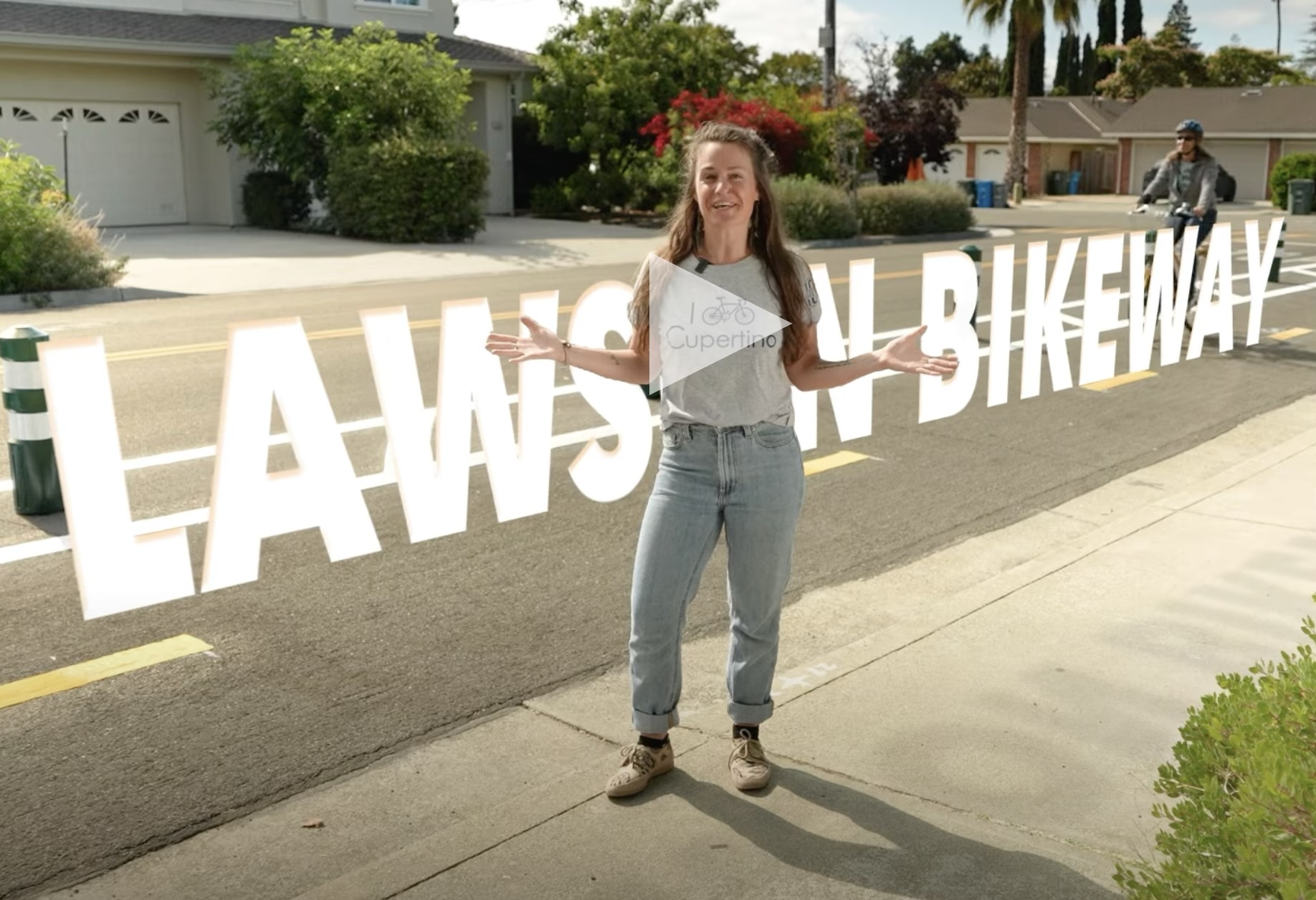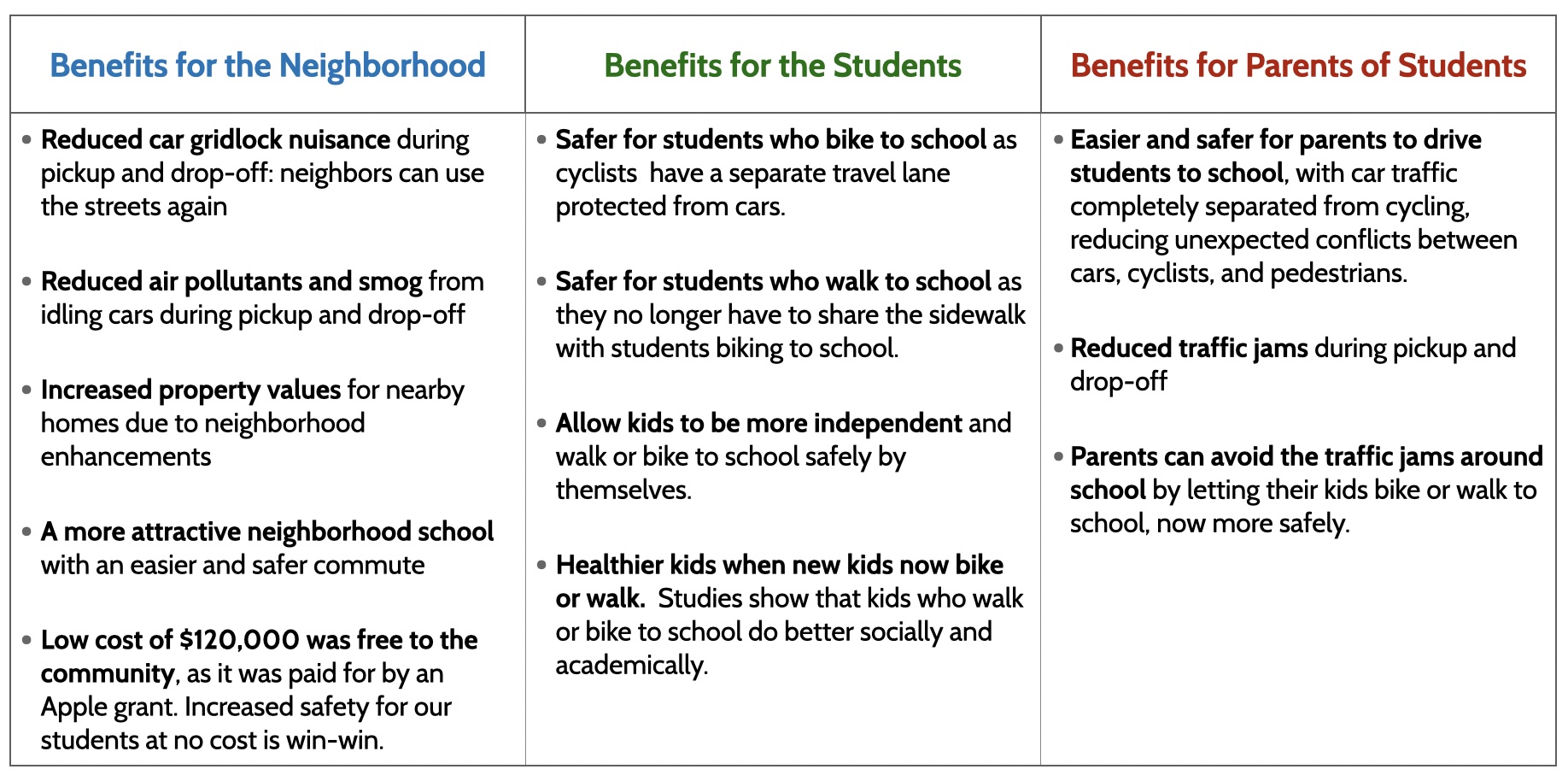It’s a lane, it’s a trail, it’s a path—it’s the Lawson Bikeway! The Lawson Bikeway, completed in Summer 2025 after seven years of planning, is Cupertino’s first two-way protected bikeway. Funded by a $120,000 Apple grant, it separates cars, biking students, and walking students to improve safety for all students while also easing traffic, reducing air pollution, and enhancing the neighborhood for all residents. It’s a model for innovation in school safety infrastructure.
Watch this cool video of commuting to Lawson on the bikeway!
A Seven Year Process
The Lawson Bikeway project was initially identified as a problem area in the Citywide SRTS Walk Audit in 2016/2017, with consistent feedback from parents about the unsafe conditions for children walking and cycling to school and many accidents and near-misses. On Sept 14, 2018, the city’s SRTS team, the Lawson SRTS parent champion (a WBC board member), and a Cupertino Bike Ped Commissioner (also a WBC board member) met at school drop-off time to see the extent of the problem and start brainstorming solutions.
The team quickly expanded to include CUSD district staff, Cupertino City transportation staff, the PTA President for Lawson, and the Lawson MS Principal and Vice-Principal. This group met regularly over the next two years exploring a range of options to reduce accidents and near-misses and make everyone safer–driving parents afraid of hitting a kid who suddenly veered in front of their car, 12-yr old children forced to cycle to school just inches away from a 4-ton minivan, and children walking to school getting jostled by students cycling on the sidewalk.
A field trip to Greene Middle School in Palo Alto in 2020 was an eye-opener. A Palo Alto city transportation staff person showed our group around the two-way bikeway that wrapped around the school and told us how it had benefited not just the students and parents, but also the residents in the neighborhood. Two more years of design brainstorming and community meetings followed and the two-way bikeway design was finally chosen in 2024 as the best solution based on the safety needs of students, the needs of the neighbors, and the site infrastructure challenges. The Lawson Bikeway was installed in Summer 2025, just in time for the Fall 2025-2026 school year.
Watch this video from Safe Routes to School for tips on how to use the Bikeway!
Benefits for the Entire Neighborhood
One of the most eye-opening learnings from Palo Alto’s experience with the two-way bikeway at Greene Middle School is that the bikeway didn’t just benefit the students by making it safer for them to walk and bike to school. It benefited the entire surrounding neighborhood, boosting property values, and creating an influx of families wanting to live in that neighborhood to take advantage of the bikeway and allow their kids to commute independently to school.
An infrastructure improvement such as the Lawson Bikeway is a powerful catalyst generating benefits for students, parents, and residents in the surrounding neighborhood.
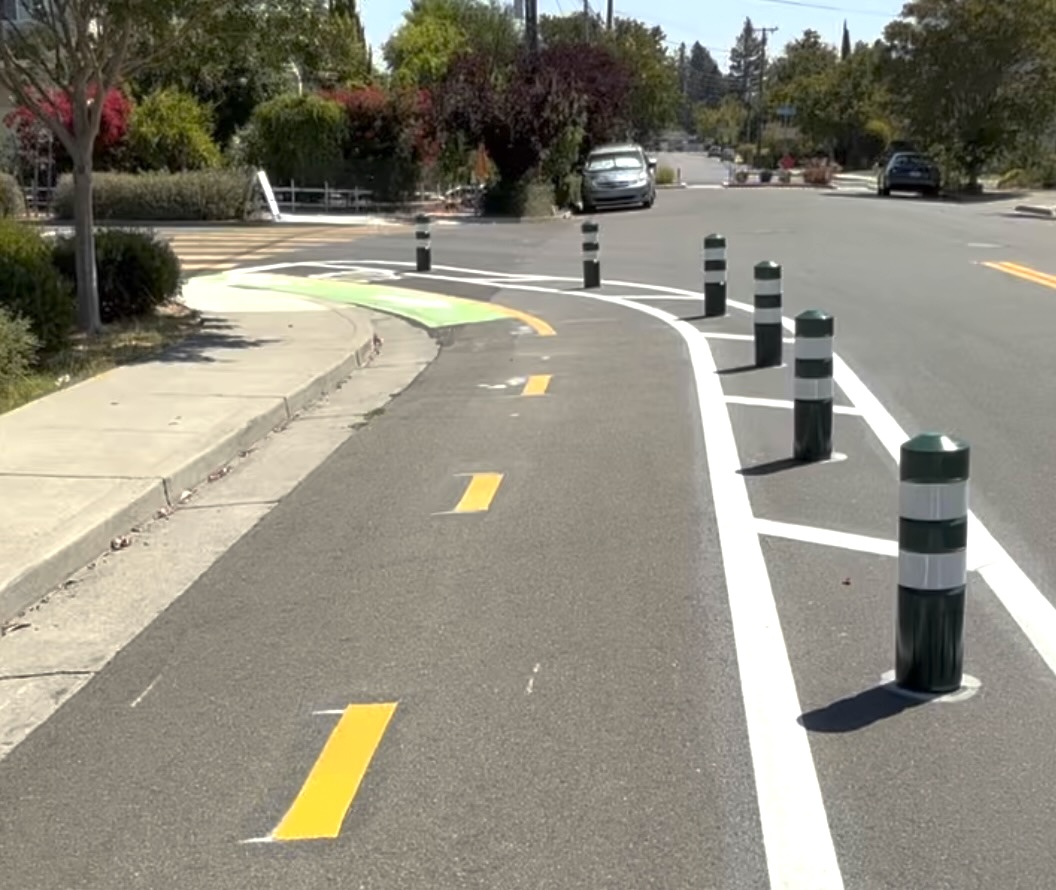
Learnings from similar bikeways is that they benefit the entire neighborhood, boosting property values, and creating an influx of young families.
A Model for School Infrastructure
The Lawson Bikeway is the first two-way bikeway in the City of Cupertino. It is a significant investment in the safety of our children. It recognises the need to create three completely separate streams of traffic for pedestrians, cyclists, and car drivers, to ensure all three sets of users of the road are safe.
- Students who walk no longer have to share the sidewalk with students cycling to class, reducing conflicts between cyclists and walkers.
- Students who bike now have a dedicated, protected bike lane to get to campus safely.
- Parents who drive their students to school will not have to worry about potential collisions with students cycling to campus, reducing conflicts between cyclists and cars.
Walk Bike Cupertino is proud to have been part of the team that initiated this project seven years ago and supported it through the many steps leading to completion this year. We hope to see the city apply these design principles to infrastructure improvements at other city schools.
